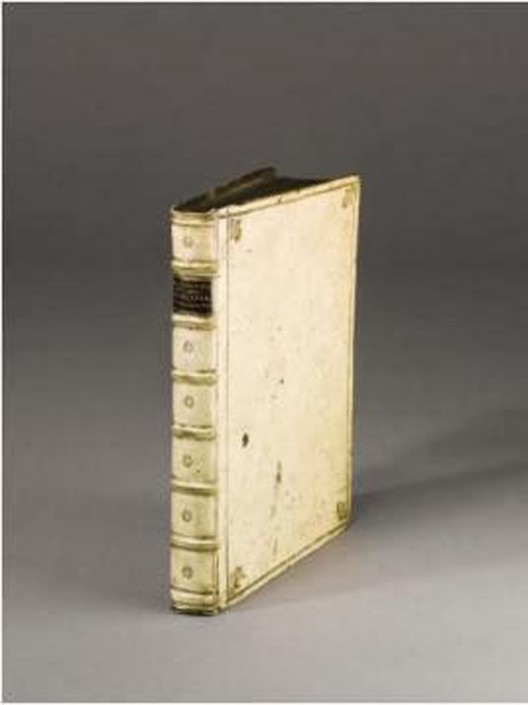“Plato is my friend, Aristotle is my friend, but my greatest friend is truth.” Thus spoke Sir Isaac Newton (1642-1727), one of the most influential scientists of all time. Rare first edition of his greatest work will be offered at Sotheby’s Music, Continental and Russian Books and Manuscripts sale in London, on November 27th. Sir Isaac Newton’s Philosophiae Naturalis Principia Mathematica (“Mathematical principles of natural philosophy”), published for the Royal Society in 1687 is estimated to fetch £250,000-300,000 ($405,000-486,000).
This exceptionally rare first issue copy of the first edition (probably fewer than three hundred copies of the first edition of Principia were printed) explained a system of the universe that, once established, was unchallenged until the twentieth century ushered in quantum theory and the theories of relativity.
Dr David Goldthorpe, Sotheby’s Senior Director, Senior Specialist, Books and Manuscripts Department commented: “This book changed man‟s understanding of the universe. Newton‟s Principia was the culmination of the scientific revolution, effectively ushering in the era of modern science and modern physics with its mathematical explanations of gravity and motion. Through its legacy, the book has probably done more to shape the modern world than any other ever published. Even Einstein, whose theories of relativity eventually came to revise those of Newton‟s, declared that the Principia was „perhaps the greatest intellectual stride that it has ever been granted to any man to make‟.”
The Principia is one of the greatest milestones in the history of science. In it Newton showed how his principle of universal gravitation provided an explanation both of falling bodies on the earth and of the motions of planets, comets, and other bodies in the heavens. The first part of the Principia is devoted to dynamics and includes Newton’s three famous laws of motion; the second part to fluid motion and other topics; and the third part to the system of the world, i.e., the unification of terrestrial and celestial mechanics under the principle of gravitation and the explanation of Kepler’s laws of planetary motion. Although Newton used the calculus to discover his results, he explained them in the Principia by use of older geometric methods.









